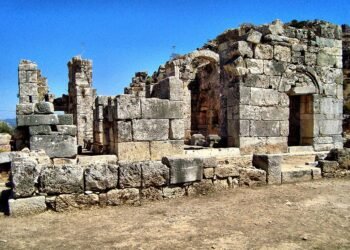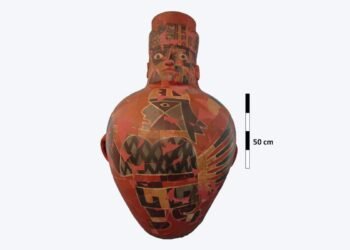The excavation at Porsuk-Zeyve Hoyuk, which began in 1968 with permission from the French Archeology Institute from the Turkish authorities, continue this year as well.
During earlier excavations, Hittite hieroglyphs engraved on sandstone from the 8th century BC, fortification and watchtowers used as garrison in the Hittite period, and castle walls and plaster fragments from the Iron Age were discovered.
Excavation Team Leader, University Polytechnique Hauts-de-France Lecturer Assoc. Dr. Claire Barat said that a team of 15 people from the USA, France, Italy and Turkey worked in this year’s excavations.

Barat stated that they were excavating the highest part of the mound and cleaning the Iron Age adobe fortification walls from the 8th and 7th centuries BC. During the excavations, they learned that these walls were surrounded by Romans and suffered a fire.
“Sometime after the Iron Age walls were completed,” he said, “the wall facade was covered with gypsum stones and stone filling.” These stone constructions were used in the 6th and 4th century BC during the Persian and Achaemenid periods.
It is important because there are few artefacts from the Persian period in Cappadocia. This is a highly strategic location both during the Hittite period and later.
At that time, the area was most likely occupied by a local ruler. The main road from Sinop to Tarsus, passing through the Cilician gates, is controlled from here.”
The Romans later repaired and occupied the walls. For this reason, it is thought that southern Cappadocia came under Roman domination not peacefully, but as a result of a bloody war.
Noting the importance of the mound in terms of its position, Barat underlined that the destruction of the stone walls during this year’s excavations revealed the severity of the Roman attack, and that all previous levels were destroyed.
Barat said that the Persian walls discovered here are similar to those seen in Persepolis, Cyprus, and Palestine. The researches are continuing.





















